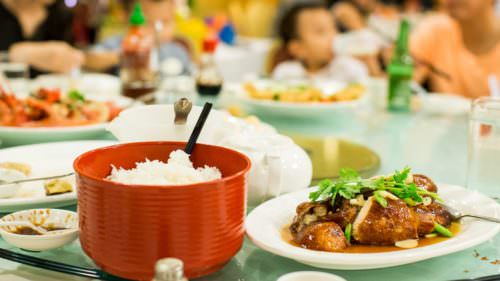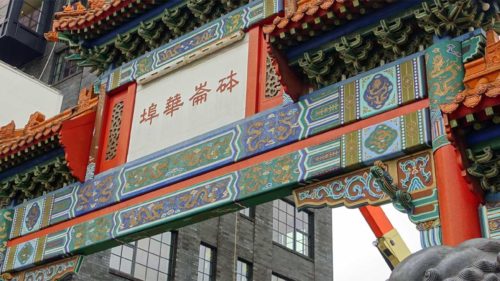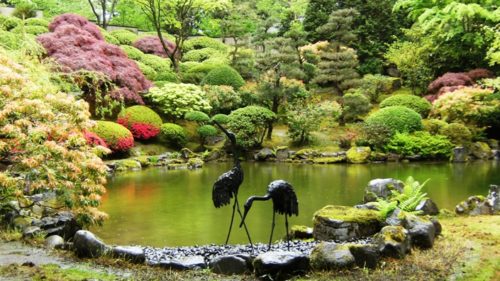Food is one of the most important aspects of Chinese culture. In fact, it’s so integral that a common greeting in traditional circles is “Have you eaten yet?” instead of “Hello” or “How are you?”
During Chinese New Year, families come together for reunion dinner, which is considered the most important meal of the year. At Chinese restaurants in Oregon and the world over, lazy Susans are common sights, making it easy for diners to share in family-style dining.
Oregon’s culture of Chinese food started when Chinese immigrants began arriving for the gold rush and then other industries in the 1850s, putting down roots everywhere from John Day to Astoria and introducing locals to their food. Despite national xenophobia stemming from the Chinese Exclusion Act and continuing with attacks against Asian Americans today, Oregon is home to thriving Chinese communities and has standout restaurants to show for it.
Home to the largest Chinese population in Oregon, Portland is the epicenter of Chinese food in the state. The city boasts a wide variety of Chinese restaurants, ranging from classic dives serving American-Chinese fare to more authentic spots focusing on a single cuisine or streamlined menus of specialties.
One of the beloved newcomers is XLB, which opened in 2017 on North Williams Avenue. Here, chef/owner Jasper Shen curates a menu of favorite Chinese dishes and Taiwanese street foods with nostalgic flavors. “We call it Chinese comfort food, because this is what we ate all the time growing up,” he says. He was introduced to the restaurant industry at an early age, helping out at his family’s Chinese-American restaurants in Maryland and later honing his skills in New York kitchens.
The restaurant is named for its signature dish, xiaolongbao, or soup dumplings, which originated in Changzhou, China, but are now closely associated with Shanghainese cuisine. As folks may have heard from the buzz around Michelin-starred chain Din Tai Fung’s famous 18-pleated version, xiaolongbao requires a lot of effort and skill to make. (The number 18 is considered a sign of prosperity in Chinese culture, and the number of pleats is recognized as a sign of the dumpling maker’s skill.)
At XLB each of the back-of-house staff knows how to pleat the dumplings. Nodding to his own training in French cooking techniques, Shen puts a signature twist on his xiaolongbao: He roasts pork and chicken bones for eight to 12 hours to lend his broth a depth of flavor, and adds bacon for a hint of salt and smoke.
八大菜系 – The Eight Great Traditions of Chinese Cuisine
As the most populous country in the world (and also the third largest in land mass), China is home to unique and varied cuisines, which are informed by region-specific ingredients, dining customs and sociopolitical histories. The exact number of distinct styles is disputed and thought to be numerous, but eight major cuisines are widely known:
Shandong cuisine hails from the region north of Beijing. Hot summers and cold winters make it conducive to growing wheat, so the cuisine is known for wheat-based foods like bao and noodles. It is also notable for influencing imperial cuisine and Northern China’s other culinary styles. The westernmost region near the mountains is home to Sichuan cuisine and its spicy, mouth-numbing food. Mapo tofu, dan dan noodles and stir-fried chicken with whole Sichuan peppers are hallmark dishes.
Hunan cuisine benefits from plentiful crops in the “breadbasket” of China, focusing on fresh produce. Stir-frying, roasting and smoking are common cooking methods for this cuisine, which is also noted for its use of salted black beans and fermentation. Cantonese food, which includes Hong Kong and the Southern coastal region, concentrates on lightly stir-frying fresh ingredients to let them shine. Jiaozi and congee, two widely popular Chinese dishes, are products of this cuisine.
Jiangsu cuisine is refined, leaning heavily on seafood and featuring dishes that are soft in texture. Centered around the historical Chinese capital of Hangzhou, Zhejiang cuisine can be broken down further into three distinct styles, which prize ingredients such as freshwater fish and bamboo shoots.
Anhui cuisine draws on a wide variety of herbs and vegetables found in the mountainous region of Anhui province. The cuisine is also strongly associated with tofu. Hailing from an area situated between the mountains and the coast, Fujian cuisine specializes in soups and utilizes pungent seasonings such as fish sauce, shrimp paste and rice wine.
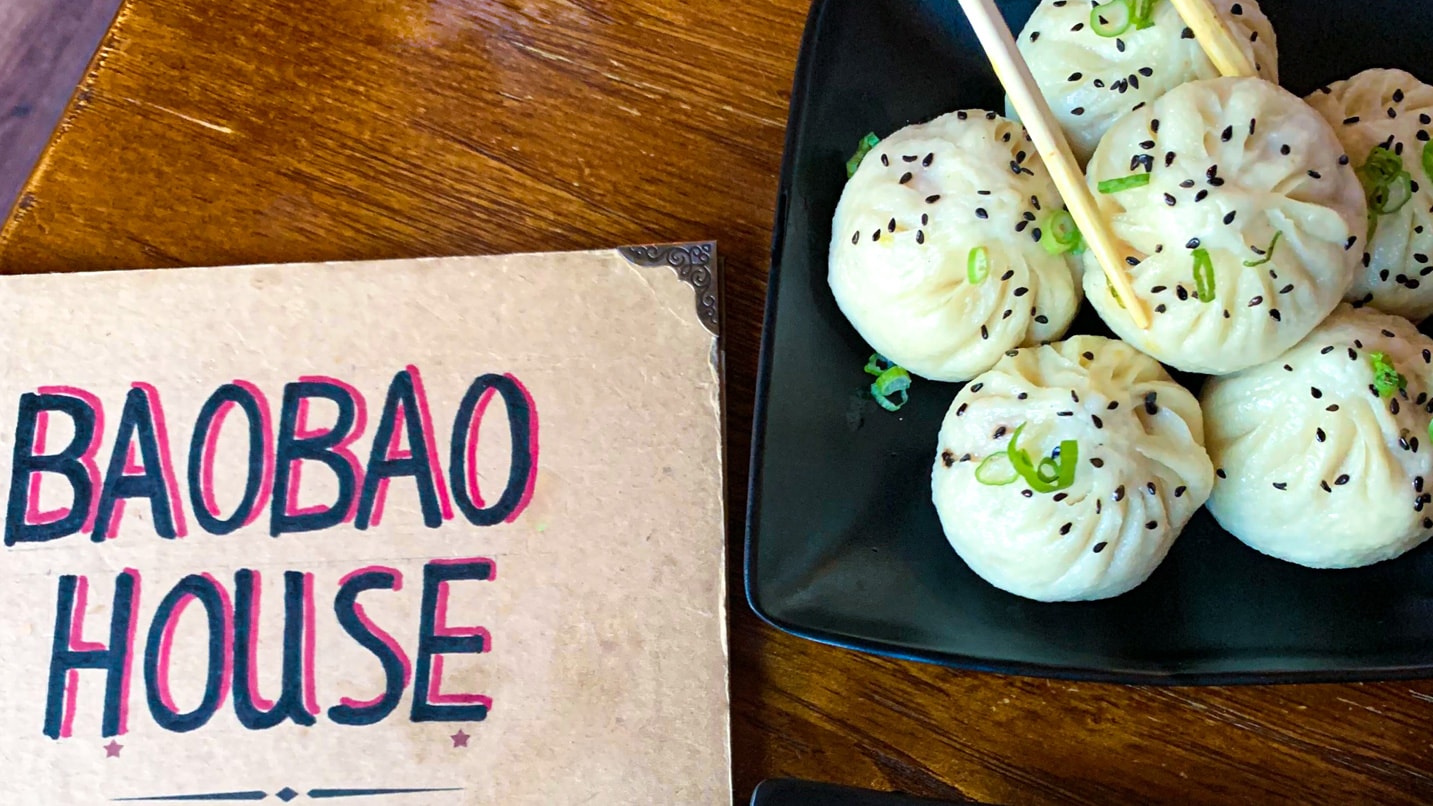
Here’s where to find a variety of Chinese restaurants in Oregon.
Portland Region
Although Portland is home to a historic Chinatown that is listed on the National Register of Historic Places, a larger concentration of Chinese restaurants and markets are located in the Jade District, along Southeast 82nd Avenue and surrounding streets. Within the Jade District, find comforting congees at Master Kong, assorted sweet and savory buns at King’s Bakery, and dim sum carts stacked high with metal steamers at HK Cafe. In northeast Portland, be sure to check out Frank’s Noodle House, which specializes in LaMian noodles, a type of Chinese noodle made by hand stretching and folding the dough into strands.
Farther southeast, Noodle Man is nestled deep in the suburb of Happy Valley, serving its hand-pulled noodles fried or in soups. On the west side, the Asian Legend food cart within Beaverton’s BG Food Cartel serves Chinese and Taiwanese favorites like oyster omelettes, hand-shaved beef noodle soup and steamed buns with braised pork.
Willamette Valley
At Bao Bao House in Eugene, you can treat yourself to handmade dumplings, baozi and wontons. To drink, try their freshly squeezed soy milk or sour plum juice. On the well-traversed corridor of East 13th Avenue next to the University of Oregon campus, Uniquely Chengdu offers an extensive drinks menu of teas and ice-milk beverages along with griddle-cooked dishes cooked to your preferred spice level, from Chengdu-trained chef Kebing Sun. Tian Fu DIY Hotpot in Corvallis lets you take matters into your own hands — you’ll start by selecting a broth before customizing your hot pot with various meats, veggies and condiments. Folks who are new to hot pot needn’t worry; the restaurant also offers hot-pot combos.
Mt. Hood and the Columbia River Gorge
Established in 1978, China Gorge has been feeding hungry folks after a day of kitesurfing, kayaking or mountain biking for decades. Located at the north end of Highway 35, the restaurant is a Hood River landmark that has greeted visitors heading up the hill for fruit picking along the Fruit Loop. Specializing in Szechuan and Hunan cuisine, the restaurant features a banquet room and the Tiger Lounge, if you fancy pairing your meal with a cocktail.
Oregon Coast
Newport’s Kam Meng Chinese Restaurant has been specializing in homestyle clay-pot cooking for more than 14 years. If you’re lucky, co-owner Huiya Chen will tickle the ivories on her piano during your visit while you dig into a special seafood pot brimming with fish, oysters, clams, mussels, prawns, scallops and calamari.
Central Oregon
In high-desert country, you’ll find the sleek and modern Chi Chinese & Sushi Bar serving dim sum on Saturdays. Diving into the dinner menu, you’ll find selections like Mandarin shaking beef, mapo tofu, and salt-and-pepper tiger shrimp categorized into sections: “From the land, earth or sea.”
Eastern Oregon
Folks in Pendleton flock to Susie’s Cafe for exceptional service from the owner herself and steaming plates of chicken or beef chow fun. The restaurant’s hearty portions at affordable prices are available for online ordering.
Southern Oregon
The tiny town of Phoenix lends its name to Golden Phoenix Chinese Restaurant, which offers dinner combos and family-style combos. The restaurant carries on the legacy of mar far chicken, a Chinese-American dish that originated at the iconic and now shuttered Medford spot Kim’s Chinese Restaurant in the 1950s. In fact, the chef at Golden Phoenix used to work at Kim’s.
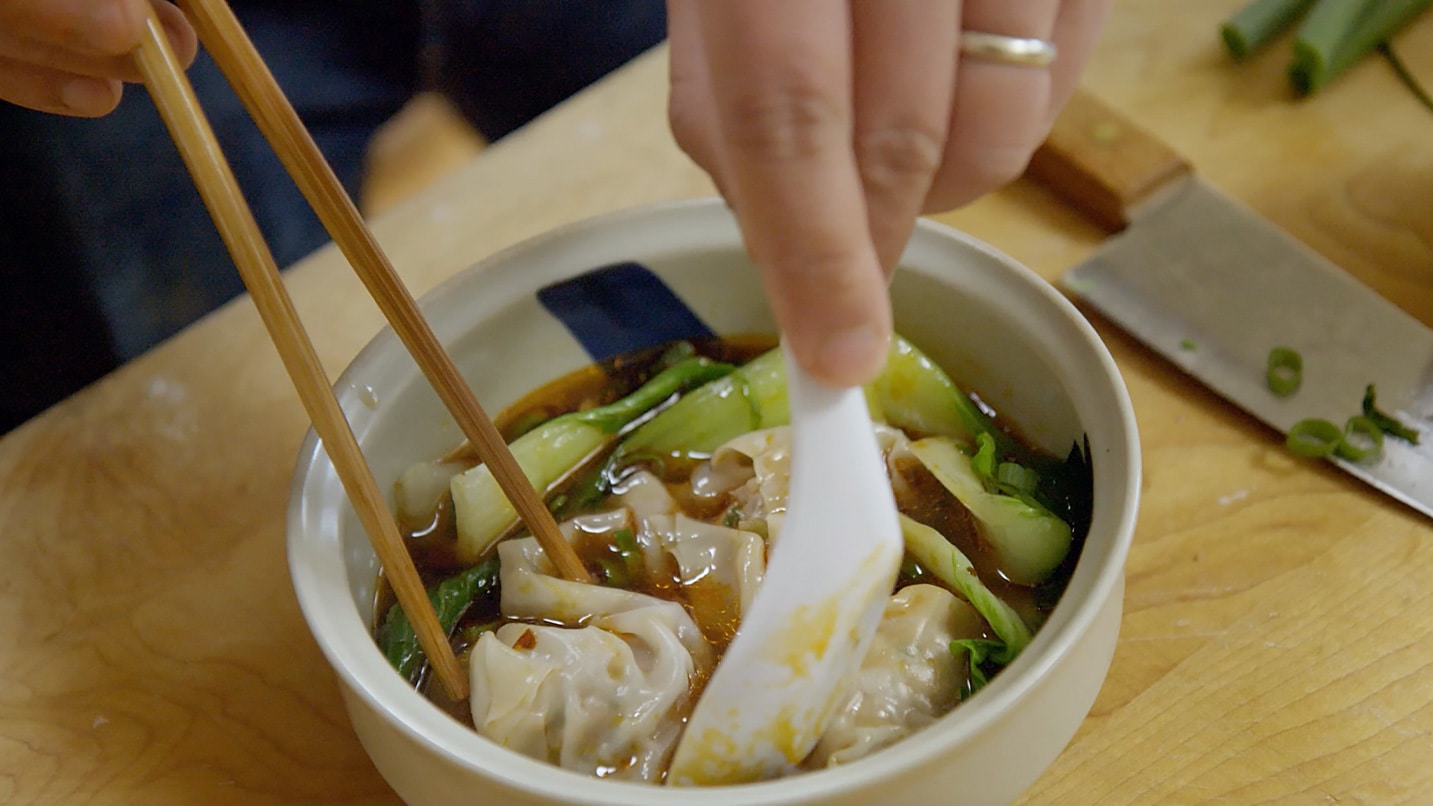
XLB Pork and Shrimp Wontons
Courtesy of Chef Jasper Shen
1 lb ground pork
1/2 lb chopped, deveined shrimp
2 Tbsp Shaoxing rice wine
2 Tbsp soy sauce
1 1/2 Tbsp minced ginger
1 tsp sugar
1 whole egg
3 tsp cold water
2 Tbsp thinly sliced scallions
1/8 tsp ground black pepper
2 Tbsp fish sauce
1 Tbsp sesame oil
32 thin wonton skins
1. Put pork and shrimp in a chilled mixing bowl. Mix briefly so pork and shrimp are distributed evenly. Add rice wine, soy sauce, ginger, sugar, egg, water, scallions, black pepper and fish sauce. Mix well to incorporate. Pan-fry a small small amount of the mixture in the oil to check seasoning; taste and adjust. Transfer mixture to a small container, cover and chill at least 30 minutes, or longer if you have time, up to 24 hours.
2. To prepare wontons, remove a few wonton skins from the package and lay them on a dry work surface. Put 1 teaspoon filling in the center of each square skin. Paint the edges of the square lightly with water. Gently fold one side over the other, pinching edges together; you should have a folded rectangle. Now pull the lower corners in toward each other and pinch together to make the traditional curved wonton shape. Place wontons 1 inch apart on a baking sheet or platter. At this point, they are ready to cook or can be placed in the freezer to be saved for later.
3. To cook wontons, bring a medium pot of water to a boil. Place 10-12 wontons in the boiling water and allow to cook for 3 minutes (7-9 minutes if cooking from frozen). Using a wire-mesh strainer or slotted spoon, fish the wontons out of the water.
4. To eat, you can make a soup using the wontons and the cooking liquid seasoned with soy sauce, chili or vinegar.
Tip: This is a great all-around recipe for filling that can also be used for bao, shumai or boiled dumplings (jiaozi).
